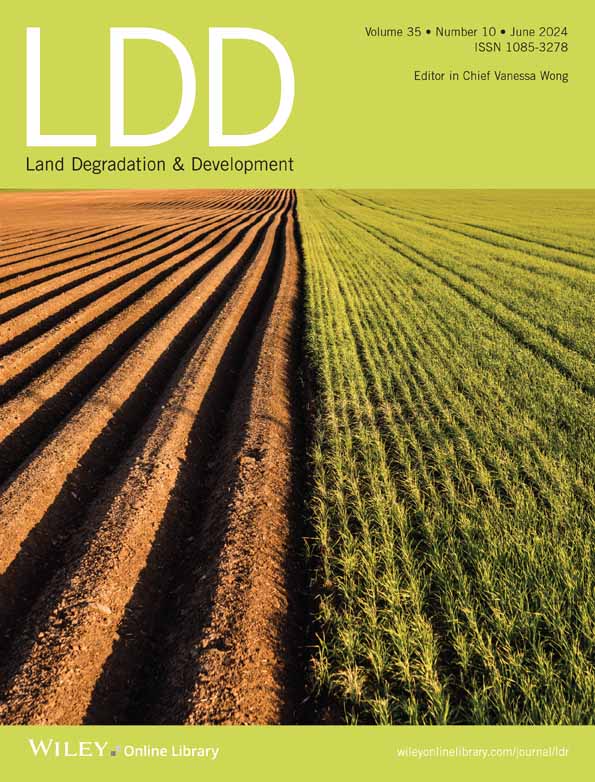Phosphorus sorption–desorption changes phosphorus fraction dynamic in a desert revegetation chronosequence
Abstract
Understanding the characteristics of soil phosphorus (P) sorption and desorption is essential for comprehending P biogeochemical cycling and effectively managing ecosystems in a desert revegetation chronosequence. The present study utilized the Freundlich model and enzymatic activity to characterize the features of P sorption–desorption, and microbial activity, which aims to elucidate the effect of P kinetics and microbial activity on P fractions in the soils of a desert revegetation chronosequence, consisting of 11, 31, 40, 57, and 65 years old revegetated deserts. The findings revealed that the 31 years old soil showed the highest alkaline phosphomonoesterase and phosphodiesterase activities, and the 40 years old displayed the highest inorganic pyrophosphatase activity. In revegetated desert soils, microbial activity changed P sorption–desorption kinetics by decreased or increased the parameters including sorption/desorption energy site, P sorption/desorption ability, and the maximum buffering capacity of P sorption/desorption. And in microbial activity soils of 31–40 years old, P desorption significantly decreased T-P and A-P concentrations (p < 0.05). P sorption process and enzyme activity explained 35.10% and 22.20% of P fraction variation, respectively; and P desorption process and enzyme activity explained 48.3% and 22.3% of P fraction variation, respectively. These findings provide valuable insights into the contribution of P kinetics coupled with microbial activity in desert ecosystems, aiding in the effective management of these fragile ecosystems.
CONFLICT OF INTEREST STATEMENT
The authors declare that they have no known competing financial interests or personal relationships that could have appeared to influence the work reported in this paper.
Open Research
DATA AVAILABILITY STATEMENT
The data that support the findings of this study are available from the corresponding author upon reasonable request.




